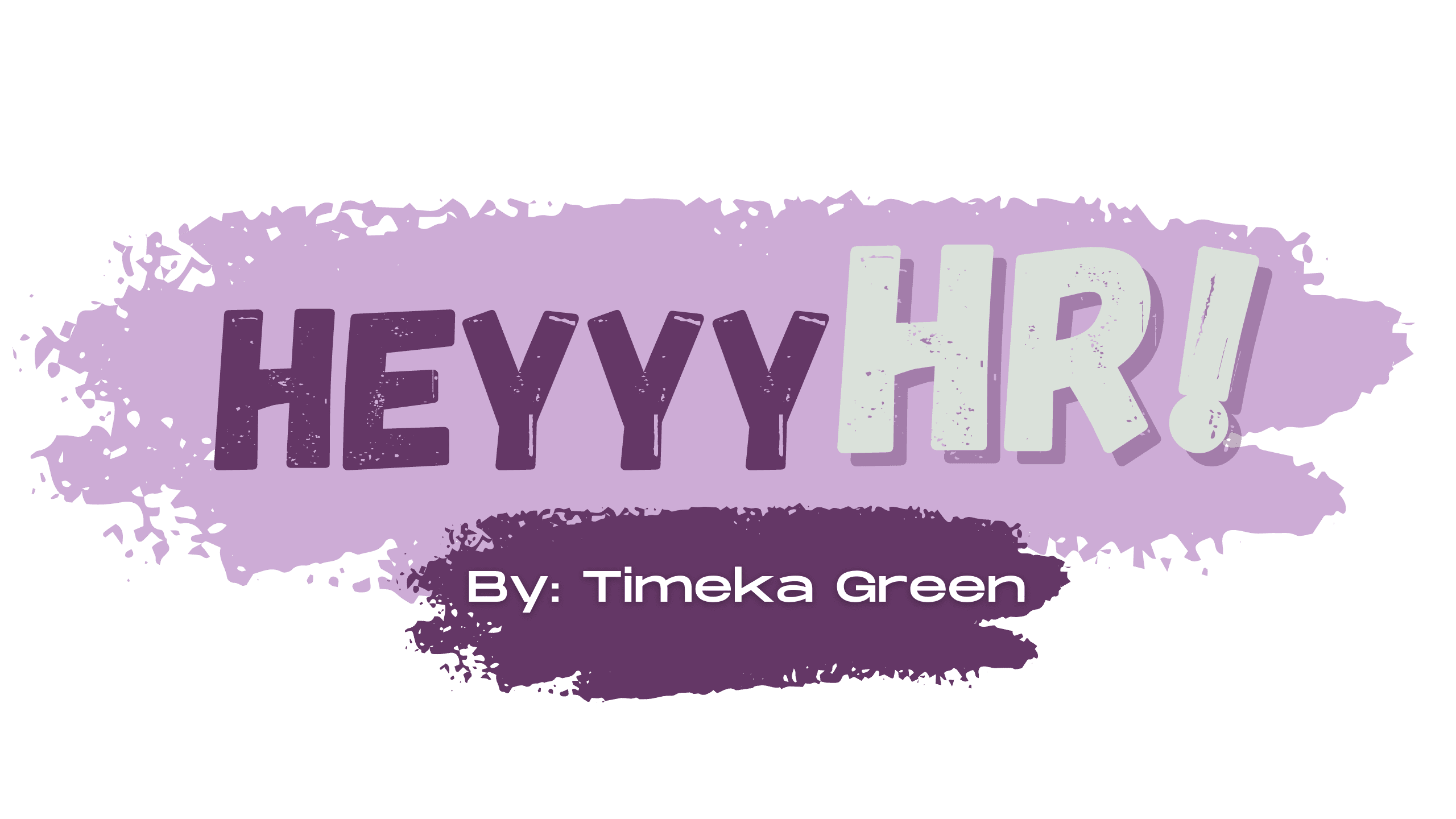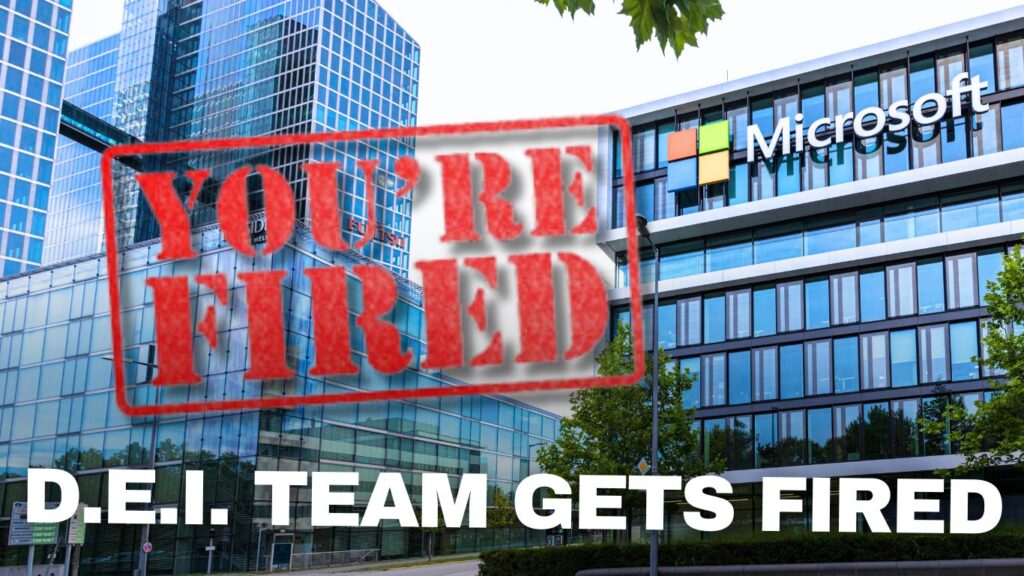Have you heard about the Microsoft layoff in 2024? The Microsoft layoff was specifically aimed at its D.E.I Team. D.E.I stands for diversity, equity, and inclusion. This move indicates a shift in the company’s approach to DEI, raising questions about its future importance within the organization. As these changes unfold, employees and industry observers are keen to understand the broader implications for workplace culture and corporate responsibility.
According to News Nation, Microsoft has reportedly laid off the entirety of its diversity, equity, and inclusion team (DEI), citing their lack of relevance to business operations. In an email viewed by Business Insider, a Microsoft “team leader” wrote; “True systems-change work associated with DEI programs everywhere are no longer business critical or smart as they were in 2020.”
According to the New York Post, Zoom, Snap, Tesla, DoorDash, Lyft, Home Depot, and Wayfair have also downsized their DEI teams. Overall, DEI-related job postings declined by 44% by mid-2023 compared to the same period in 2022. Microsoft had pledged to invest $150 million into its DEI push, which involved doubling the number of black and Hispanic leaders by 2025. “As we move forward, our D&I commitments remain unchanged,” Microsoft spokesperson Jeff Jones told The Post.
The layoffs have sparked discussions on the value and prioritization of DEI initiatives in large companies. While some argue that the cuts signal a reduction in commitment to these critical areas, others believe that focusing on core business outcomes can lead to more effective strategies in the long run. This blog post will explore the reasons behind Microsoft’s decision, its impact on employees, and the reactions from the corporate world.
Overview of Microsoft’s Layoff
Understanding the dynamics of these layoffs provides insight into how organizations navigate the balance between financial decisions and social responsibilities. Employees and stakeholders are left wondering how this choice will affect their roles and the broader workplace environment.
The video below explains how minorities were hesitant that many large corporate businesses only focused on DEI during 2020 mainly because of the impact of the Black Lives Matter (BLM) Movement.

Microsoft recently announced significant layoffs affecting its Diversity, Equity, and Inclusion (DEI) team, a move that has raised questions about the company’s strategy, corporate responsibilities, and priorities. The following sections outline the context of these layoffs and provide a timeline of key events.
Context and Scale of the Microsoft Layoff
The layoff of the DEI team at Microsoft reflects a shift in the company’s approach to inclusion strategies. Reports indicate that the layoffs were attributed to “changing business needs.” This comes amid increasing scrutiny over how companies prioritize DEI initiatives within their business models and current topics surrounding politics with the 2024 Presidential Election in the US on the horizon.
Microsoft’s decision to cut the entire DEI team has sparked debates about the value of these programs and their original intent when they created and/or expanded their DEI team. Many argue that such efforts are essential for fostering a diverse workplace. Still, the company suggests that the team’s relevance diminished and is not as important as it was in 2020.
The layoffs impact not just team members but also raise concerns among employees about the company’s overall commitment to these important values.
Timeline of Events Surrounding the Microsoft Layoff
In 2020, Microsoft started a lot of “firsts” in their efforts towards diversity, which included: females, those with disabilities, representation amonth all minority races, and pay transparency.
Below is an excerpt from their 2020 Global Diversity and Inclusion report:
This year’s report focuses on three core areas in addition to the data: the ways that diversity and inclusion is integrated into our employee pandemic response, our commitments to addressing racial injustice, and our investment in the Allyship at Microsoft learning path. The report also includes:
- For the first time, our data on the number of employees in the U.S. who self-identify as having a disability;
- An expanded look at our global equal pay data including 10 of the largest markets outside of the U.S.;
- A closer look at our Inclusion Index and the various ways we receive insights on how employees experience our efforts to strengthen our culture of inclusion; and
- A more global mix of employee voices and experiences across a range of communities, identities, and geographies.
The data shows steady progress
Microsoft started publicly sharing its annual workforce demographics in 2014. This year’s report reflects the trends and learnings over our five most recent demographic data disclosures.
The following data reflects Microsoft only; it does not include our broader family of companies[1] (LinkedIn, GitHub, and our minimally integrated gaming studios), nor does it include new acquisitions and joint ventures.
- Diverse representation: Overall, we have seen some modest gains since 2019 including among women who now represent 28.6% of the global Microsoft workforce, an increase of 1.0 percentage point since last year. However, racial and ethnic minority communities have largely seen incremental progress and there is still much work to be done.
- Black or African American employees represent 4.9% of our U.S. workforce, up 0.3 percentage points since 2019.
- Hispanic and Latinx employees represent 6.6% of our U.S. workforce, up 0.3 percentage points since 2019.
- Native American, Alaska Native, Native Hawaiian, and Pacific Islander employees represent 0.7% of our U.S. workforce, and this number has remained the same since last year.
- Asian employees, which include more than a dozen different ethnic groups, represent 34.7% of our U.S. workforce, an increase of 1.6 percentage points compared to 2019.
- We see clear opportunity to improve representation across all levels and roles, especially for Black and African American and Hispanic and Latinx employees. We are prioritizing our recent commitments to strengthen our intentional career planning and talent development efforts on the path to senior leadership.
- Black and African American employees are 4.9% of our U.S. workforce and 5.2% of individual contributors, but only 2.9% of managers, 2.6% of directors, and 2.9% of partners + executives.
- Hispanic or Latinx employees are 6.6% of our U.S. workforce and 6.8% of individual contributors, but only 5.4% of managers, 4.8% of directors, and 4.4% of partners + executives.
- For the first time this year, we are also including data on employees with disabilities, which provides us a benchmark for growth and an understanding of the opportunities ahead.
- According to a survey of Microsoft’s employees in the U.S., 6.1% self-identify as having a disability. Learn more about why we’re including this data and how it will guide us moving forward from Microsoft Chief Accessibility Officer Jenny Lay-Flurrie.
- According to a survey of Microsoft’s employees in the U.S., 6.1% self-identify as having a disability. Learn more about why we’re including this data and how it will guide us moving forward from Microsoft Chief Accessibility Officer Jenny Lay-Flurrie.
This timeline below details the key moments surrounding the 2024 DEI layoffs at Microsoft, illustrating how quickly circumstances changed within the organization.
- July 1, 2024: Official announcement of layoffs from Microsoft, indicating that the DEI team would be dissolved.
- July 15, 2024: Internal emails from the DEI team leader circulate, emphasizing that DEI is now viewed as “no longer business critical.”
- Recent Reports: Microsoft maintains that it remains committed to diversity and inclusion despite the cuts, with promises that larger goals and main teams will remain intact.
Now that Microsoft has made significant changes, many have been focused on how this will impact DEI and initiatives surrounding DEI in the corporate-level workplace. Click here to view Microsoft’s annual Global Diversity & Inclusion Reports.
Impact on Diversity, Equity, and Inclusion (DEI)
The recent changes at Microsoft have raised concerns about the future of their Diversity, Equity, and Inclusion (DEI) efforts. These developments affect both ongoing initiatives and employee perceptions of the company’s commitment to these values.
Microsoft’s 2023 Global Diversity Report shows the emphasis below:
- The representation of women and most racial and ethnic minority groups (Asian, Black and African American, Hispanic and Latinx, and multiracial employees) has increased at all levels over the past five years.
- We maintained or grew representation within several leadership levels for women and U.S. racial and ethnic minority groups year over year.
- While hiring volume slowed, hiring representation was greater than or equal to representation for women and all racial and ethnic minority groups except Native American and Alaska Native.
- At Microsoft, we are committed to the principle of pay equity, which accounts for factors that legitimately influence total pay including things like job title, level and tenure. As of September 2023:
- Last year, we began voluntarily disclosing median unadjusted pay analysis, which gathers the total pay amounts for all employees across a company — regardless of factors such as job title, level or tenure — sorts those amounts by value, and then identifies the number that’s in the middle, or median, of all of those data points. The difference between that median pay amount for any two employee groups is referred to as a median unadjusted pay gap.
Effects on DEI Initiatives at Microsoft
Microsoft’s decision to cut its DEI team impacts the focus and funding of diversity programs. With fewer resources, it may struggle to sustain initiatives aimed at promoting inclusivity within the workplace. This shift could lead to a reduction in training and support systems designed to ensure equitable opportunities for all employees.
Some reported layoffs have left positions unfilled, which may hinder efforts to attract a diverse workforce. Employees might feel less supported in their efforts to promote inclusivity, further diminishing trust in the company’s commitment to DEI.

Responses to DEI Concerns
In light of these changes, reactions from employees and the public have been mixed. Some employees have voiced disappointment and concern over the de-emphasis on DEI, feeling that it undermines Microsoft’s previous commitments. As the company shifts its business focus, many worry that this could signal a broader trend away from prioritizing diversity.
In response, Microsoft has tried to reassure employees of its ongoing commitment to inclusive practices, even without a dedicated DEI team. Communicating the importance of diverse perspectives in innovation remains crucial. Engaging with employees through open forums may help address concerns and maintain morale as the organization navigates this transition.
Corporate Response and Strategy
Microsoft’s approach to the recent layoffs in its Diversity, Equity, and Inclusion (DEI) team reflects both internal challenges and shifts in business strategy. The company’s official statements reveal its perspective on these changes, while its strategic adjustments indicate a re-evaluation of priorities moving forward.
Microsoft’s Official Statements
In response to the DEI team layoffs, Microsoft issued a statement emphasizing that the company remains committed to diversity in its workforce. They noted that while some positions were eliminated, the main objectives of their DEI initiatives would continue.
Below is an excerpt from the latest LinkedIn post from Lindsay-Raye McIntirey, Microsoft’s Chief Diversity Officer and Corporate VP of Talent Development:
This next fiscal year our focus includes continuing to execute D&I and talent management best practices that we know deliver business outcomes as well as investing in net new opportunities to support skills and career growth. A few examples include:
✔ Driving greater access to skilling and career opportunities for Microsoft employees at all levels through intentional talent management and cross-company experiences such as our premier global career event
✔ Ensuring each one of us at Microsoft is accountable for our D&I progress, individually through our D&I Core Priority, as managers and leaders through inclusive hiring and executive accountability, and collectively through companywide opportunities such as D&I learning and our global ERG Engage event that helps us move together from insights to action
✔ Continuing to anchor our product innovation to inclusion, as we have done with self-expression in Microsoft 365 and accessibility in Copilot, M365, and Azure AI
✔ Transparently sharing our progress, and our opportunities, around increasing representation and strengthening our culture of inclusion this coming Q2 in our Global Diversity & Inclusion Report”
The official communication indicated that business needs were evolving. Microsoft underscored its aim to align resources with these changing priorities. This focus on adaptation suggests that the company is steering its strategies to meet both market demands and organizational goals.
Strategic Adjustments Post-Layoff
Following the layoffs, Microsoft is implementing strategic adjustments to realign its focus. The company is concentrating on integrating DEI efforts within broader business operations rather than as standalone initiatives.
This shift aims to ensure that diversity and inclusion are embedded in all aspects of the business. By prioritizing this approach, Microsoft hopes to create a more inclusive culture while also driving performance. The layoffs are seen not just as cuts, but as part of a larger strategy to enhance effectiveness and resource allocation amidst shifting business landscapes.
This will be further clarified when Microsoft releases it/s 2024 Global Diversity Report in the final quarter of this year and can be verified when it releases the 2025 Global Diversity Report in late 2025.
Employee Perspective

The recent layoffs of the Diversity, Equity, and Inclusion (DEI) team at Microsoft have sparked a range of emotions among employees. Many are assessing their feelings about the company’s commitment to these values and the future of related initiatives.
Internal Sentiment
Employees have expressed concern and disappointment over the layoffs. The loss of the DEI team has led some to feel that their voices are being diminished. In an internal email, a former team leader described a growing disconnect between upper management and the importance of DEI initiatives. This unfortunate situation has raised questions about Microsoft’s true commitment to diversity.
Many employees worry that focusing less on DEI may hinder progress in creating an inclusive workplace. Overall, there is a sense of uncertainty regarding the direction of these efforts within the company.
Outlook on Future DEI Efforts
Looking ahead, employees are skeptical about Microsoft’s future DEI initiatives. Following the layoffs, staff members are questioning how the company will address diversity going forward. Some employees hope that Microsoft will reconsider its approach and reinstate a dedicated team focused on these critical issues. Others think that without a clear strategy, efforts may become fragmented. Yet, there are some who feel that the emphasis on DEI was not needed in the first place. As a result, they find gratitude with the lessened focus on diversity, equity, and inclusion.
Microsoft’s commitment to DEI is now under intense scrutiny. Many wonder if the company’s previous promises will be honored or if they will fade away without dedicated support and resources.
Key Takeaways
- Microsoft laid off its DEI team, signaling a change in corporate focus.
- Reactions to the layoffs highlight differing views on the importance of DEI.
- Employees are concerned about the future impact on workplace culture.
Frequently Asked Questions (FAQs)
The recent layoffs at Microsoft have raised many questions regarding the future of its Diversity, Equity, and Inclusion (DEI) initiatives. Key concerns involve the impact of these changes, Microsoft’s strategy moving forward, and the response from the DEI community.
What is the impact of recent layoffs on Microsoft’s DEI initiatives?
Recent layoffs have caused uncertainty about the future of Microsoft’s DEI initiatives. Many worry that cutting staff from these teams may hinder progress towards a more inclusive workplace.
How will Microsoft’s DEI strategy change after recent workforce reductions?
Microsoft’s DEI strategy may shift focus after the layoffs. The company has stated that they are committed to reassessing its priorities and redefining how it approaches diversity and inclusion within its workforce.
What measures is Microsoft taking to maintain DEI commitments post-layoffs?
Microsoft is making efforts to uphold its DEI commitments even after the layoffs. They are exploring new ways to integrate DEI values into broader business goals to ensure these principles remain a priority. Click here to view Microsoft’s annual Global Diversity & Inclusion Reports.
How many DEI roles at Microsoft were affected by the recent job cuts?
The exact number of DEI roles affected by the job cuts is uncertain. Various reports suggest that the layoffs impacted a team focused on DEI, but specifics on the number remain unclear.
What has been the response from the DEI community to Microsoft’s layoff announcement?
The DEI community has expressed concern regarding Microsoft’s decision to lay off its DEI team. Many activists and professionals are questioning the long-term effects this may have on the company’s commitment to inclusivity.
In which departments were DEI-related positions at Microsoft most significantly reduced?
DEI-related positions were primarily located within dedicated teams focused on inclusion strategies. These positions saw significant reductions, particularly in management and program coordination roles related to DEI efforts.
You May Also Like …
- Top 6 Benefits of Diversity in the Workplace
- Microsoft Lays off DEI team / No longer BUSINESS critical or smart as they were in 2020
- What is DEI (Diversity Equity & Inclusion) and why is it important?
- Strategizing in Human Resources as Minority HR Leaders with Akida Mann & Dominique Raven
- CAREER SUCCESS while BEING BLACK in the workplace
- Microsoft D&I cuts impact two positions — company says main team and larger goals remain intact




 Subscribe to my channel
Subscribe to my channel